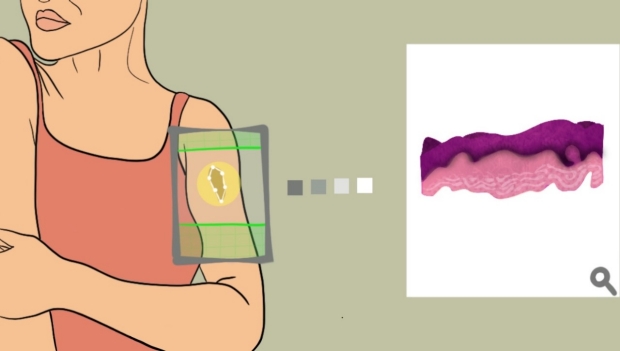Virtual Skin Biopsy Determines Presence of Cancerous Cells
Posted on 12 Apr 2024
When dermatologists spot an unusual mark on a patient's skin, they face a choice: monitor it for some time or remove it for biopsy. Similarly, when removing breast tumors, surgeons must send excised tissues to pathologists who take several days to determine if any cancerous cells remain, leading to a second surgery for removing additional cells in about 20% of cases. Pathologists process these tissues by slicing them into thin sections and staining them with hematoxylin and eosin (H&E), which enhances the visibility of cellular structures and is crucial for diagnosing cancers and other diseases. However, this method is labor-intensive and irreversible; once a biopsy is sliced in one direction, it cannot be resectioned for alternative views. Now, a "virtual biopsy" could allow dermatologists to forego the scalpel and scan the skin to check for cancerous cells without an incision. Similarly, surgeons might soon be able to determine if they have completely removed the tumor during the procedure itself by using real-time imaging instead of waiting for traditional pathology results.
Researchers at Stanford Medicine (Stanford, CA, USA) have introduced a technique that utilizes lasers to penetrate tissue and create detailed three-dimensional reconstructions of cellular structures. This method enables the production of cross-sectional images similar to those made by slicing biopsy samples, which are typically examined under a microscope. This breakthrough could allow for noninvasive skin scans and speed up the biopsy results from other tissues, potentially offering more comprehensive diagnostic information. While further development is required to bring this technology to clinical practice, the researchers are optimistic that their innovation will transform how biopsies are performed.

“We’ve not only created something that can replace the current gold-standard pathology slides for diagnosing many conditions, but we actually improved the resolution of these scans so much that we start to pick up information that would be extremely hard to see otherwise,” said Adam de la Zerda, Ph.D., an associate professor of structural biology.
Related Links:
Stanford Medicine














